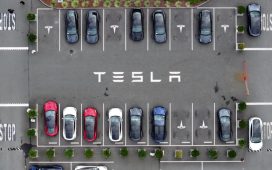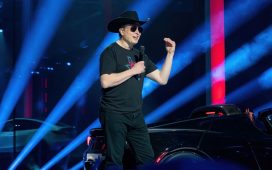Tesla has become particularly dependent on cloud services for a variety of tasks. Before the launch of the Model 3 and Model Y, Tesla used key fobs for the Model S and the Model X, but also had a smartphone app that drivers could use to unlock their car. Drivers often left their fob at home and relied on the app to unlock the vehicle.
“The problem there is, even if the cloud platform is working properly, you still had to actually have connectivity to the cloud,” Abuelsamid said. “If you perhaps went for a drive somewhere where your cellphone connectivity was nonexistent and then inadvertently locked the door, you might not be able to get back into the car.”
Tesla now uses near-field communication, with which a driver can simply put their phone into contact with their car door, and if the phone has previously been paired to the vehicle, it will unlock without requiring cloud connection.
Automakers have explored alternative technologies that don’t depend on a reliable network connection, such as these keyless entry systems that use near-field communication and, more recently, ultra-wideband technology.
Manufacturers can also use a hybrid approach that blends connected software with embedded hardware so that a vehicle retains at least partial capabilities in an outage.
While some features, such as infotainment and mobile access, are connected to the cloud, “mission critical” systems include active segmentation, which helps ensure functionality “so that a break does not impact vehicle operations as a vehicle is traveling or moving or anything that would, in essence, jeopardize consumer safety,” Bryan Chance, global connected car solution leader at EY, told Automotive News.







